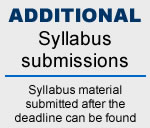About This Meeting
- Meeting Information
- Objectives
Education Mission Statement
The annual Winter/Spring Meeting will focus on topics of interest to those who provide anesthesia, sedation, pain management, and critical care services to infants and children. The overall goals for attendees of the program are to reinforce and enhance their existing fund of knowledge, and to introduce them to new and state-of-the-art issues that affect their practice in order to improve the perioperative/critical care of pediatric patients.
Scope & Types of Activities
The program brings together experts from clinical and basic science disciplines related to pediatric medicine, anesthesia, and surgery.
General topic areas include anatomy, pathophysiology, anesthetic pharmacology, sedation, pain management, patient safety, and child advocacy issues. We will also discuss practice and career management issues. The presentation format is varied, and includes lectures and refresher courses, panel discussions, hands-on workshops and problem-based learning discussions. Additionally, an important part of the program is the presentation of new clinical and basic science research in oral and moderated poster-discussion forums. Significant attendee involvement and feedback are encouraged in all aspects of the program, and will be facilitated by the use of real time computerized audience polling as well as sessions where the audience directly participates in case discussions. Program content is, in fact, the direct result of membership input and extensive audience polling at prior meetings.
Target Audience
This program is intended for anesthesiologists and other practitioners who care for children in their practice of anesthesiology and/or critical care. It is also intended for clinical and basic science researchers whose areas of investigation relate to pediatric anesthesia.
Accreditation & Designation
The Society for Pediatric Anesthesia is accredited by the Accreditation Council for Continuing Medical Education to provide continuing medical education for physicians.
The Society for Pediatric Anesthesia designates this educational activity for a maximum of 7.75 AMA PRA Category 1 Credit(s)™. Physicians should only claim credit commensurate with the extent of their participation in the activity.
Surviving Chronic Hypoxia: Do we have the necessary genes?
At the conclusion of the lecture, the participants will have learned about the biology of hypoxic cell death and recent genetic findings that provide hope that new therapeutic approaches to hypoxic survival are feasible.
Ischemic Preconditioning: An interesting concept or a clinical reality?
At the conclusion of this lecture, participants will have learned about the innate mechanisms of multi-organ protection that can be induced by transient ischemic stimuli given to the local or remote tissues. Participants will also learn about potential opportunities for translation of these physiological principles into clinical benefits for patients with congenital heart disease.
Anesthetic Management of a Child with Long Standing Hypoxia
At the conclusion of the lecture, the participants will learn about the effects of long standing hypoxemia. Challenges of anesthetic management of children with chronic hypoxemia will also be discussed.
Cardiac MRI: Why Cardiologists Want It?
Upon completion of this lecture, the participant will know the indications and limitations of MRI as well as pertinet anesthetic issues (breath holding, type of IV access, etc.) involved in obtaining quality images.
Challenges of Anesthetizing for Cardiac MRI
At the conclusion of the lecture, the audience will learn about pitfalls and risks of anesthetizing children with congenital heart disease in MRI working environment.
Three Month Old Child with Dilated Cardiomyopathy for Evaluation for Heart Transplantation
At the conclusion of this talk, the audience will understand the utility of cardiac catheterization data in patients with dilated cardiomyopathy and how anesthetics impact this data. Audience members will also appreciate the challenges of induction and maintenance of anesthesia in this group of patients.
Williams Syndrome with Critical AS and PS for Cardiac Catheter and Potential Balloon Dilation
Upon completion of this lecture, the participant will understand the pathophysiology of Williams Syndrome as well as the incidence and the proposed risk factors for cardiac arrest under anesthesia.
Three Month Old with BT Shunt Brought to Cath. Lab with Severe, Persistent Desaturation
At the conclusion of this talk, the audience will understand the approach to managing the child with shunt-dependent pulmonary circulation.
Respiratory Mechanics After Cardiopulmonary Bypass
Upon completion of this lecture, the participant will be able to identify the detrimental effect of Cardiopulmonary Bypass on lung function, and will be able to determine pathophysiology based interventions experiencing post-bypass respiratory difficulties.
Pro: Extubation in the OR after CPB: Could We, Should We, Would We
Upon completion of this lecture, the participants will be able to discuss the feasibility of early extubation in children after undergoing bypass surgery, will be able to identify the factors associated with a successful early extubation, and will also learn about benefits of early extubation in children with single ventricle physiology following bi-directional Glenn and Fontan procedures.
Con: What’t the Hurry: Pathophysiology the “fast trackers” don’t want you to know
Upon completion of this Pro/Con session, the participant will be able to discuss key pathophysiologic issues related to postoperative ventilatory management of patients with congenital heart disease, and will also learn about risks and benefits of “fast-tracking”/early extubation vs. delayed extubation of pediatric patients following major cardiac surgery.
Surgical Pathology of TET
At the conclusion of the lecture the audience will be introduced to a review of the anatomic characteristics of Tetrology of Fallot and learn the variant lesions present in this defect. Pathologic specimens will be presented and examined.
Surgical Repair
At the conclusion of the lecture, participants will have had a comprehensive review of surgical options for the repair of children with Tetrology of Fallot. The audience will have learned the factors considered in the process of surgical decision making in these children and the outcomes of the various repair strategies.
TEE Evaluation of TET/DORV
At the conclusion of the lecture, participants will have been given an outline of the echocardiographic examination of children with Tetrology of Fallot. The audience will have learned the important TEE findings to examine in the perioperative period and methods of assessment of surgical repairs.


